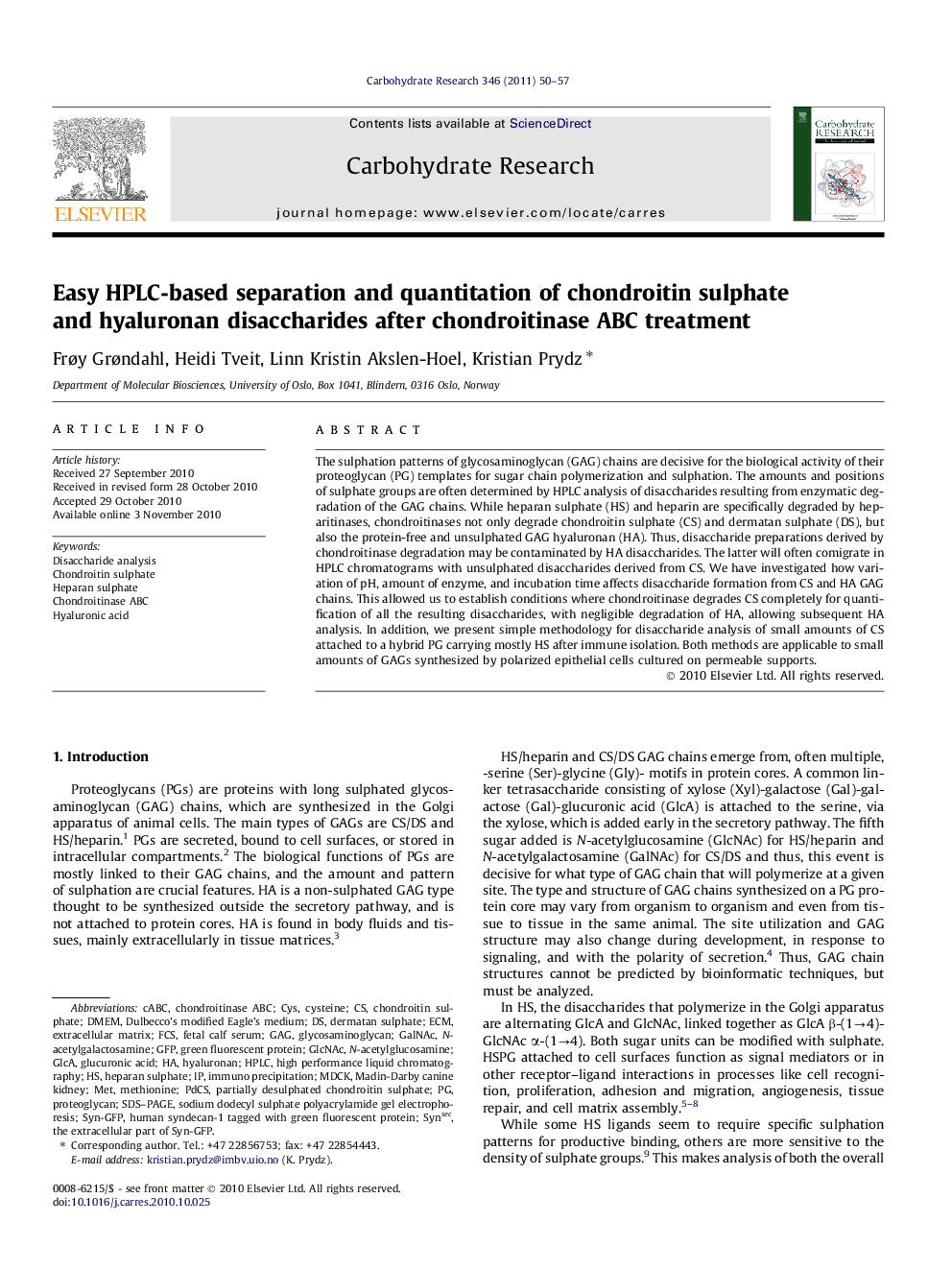| Article ID | Journal | Published Year | Pages | File Type |
|---|---|---|---|---|
| 1388452 | Carbohydrate Research | 2011 | 8 Pages |
The sulphation patterns of glycosaminoglycan (GAG) chains are decisive for the biological activity of their proteoglycan (PG) templates for sugar chain polymerization and sulphation. The amounts and positions of sulphate groups are often determined by HPLC analysis of disaccharides resulting from enzymatic degradation of the GAG chains. While heparan sulphate (HS) and heparin are specifically degraded by heparitinases, chondroitinases not only degrade chondroitin sulphate (CS) and dermatan sulphate (DS), but also the protein-free and unsulphated GAG hyaluronan (HA). Thus, disaccharide preparations derived by chondroitinase degradation may be contaminated by HA disaccharides. The latter will often comigrate in HPLC chromatograms with unsulphated disaccharides derived from CS. We have investigated how variation of pH, amount of enzyme, and incubation time affects disaccharide formation from CS and HA GAG chains. This allowed us to establish conditions where chondroitinase degrades CS completely for quantification of all the resulting disaccharides, with negligible degradation of HA, allowing subsequent HA analysis. In addition, we present simple methodology for disaccharide analysis of small amounts of CS attached to a hybrid PG carrying mostly HS after immune isolation. Both methods are applicable to small amounts of GAGs synthesized by polarized epithelial cells cultured on permeable supports.
Graphical abstractFigure optionsDownload full-size imageDownload as PowerPoint slide
